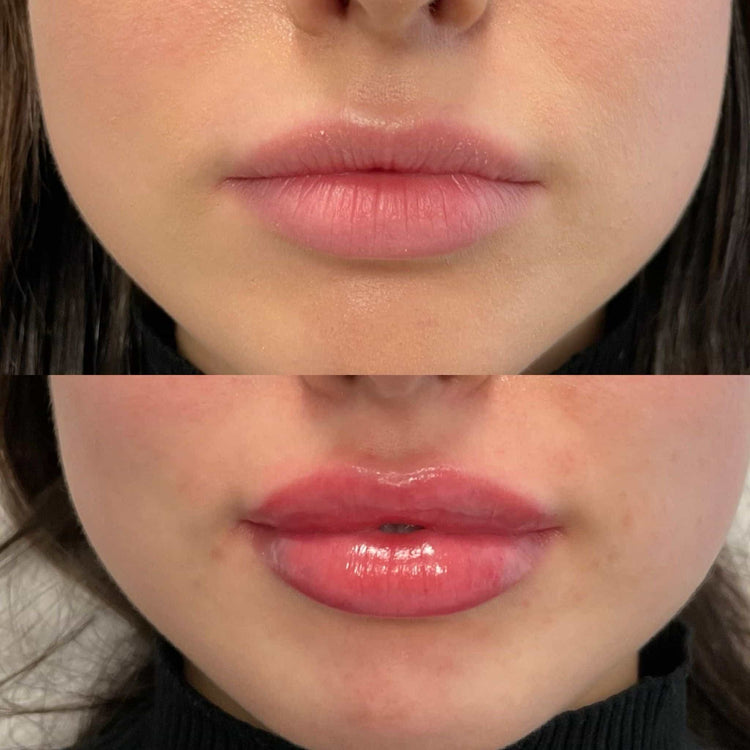Choosing the Right Filler
In the pursuit of enhancing natural beauty, dermal fillers have emerged as a popular choice for addressing signs of aging and restoring volume. However, achieving truly natural-looking results hinges on selecting the right filler type for specific needs and facial areas.
Understanding Different Filler Types
Dermal fillers are made from various materials, each with unique properties that determine their suitability for different applications. Hyaluronic acid fillers are the most common type, known for their ability to attract and retain moisture, adding volume and smoothing fine lines. These fillers are particularly effective in treating wrinkles around the eyes, lips, and mouth.
Calcium hydroxylapatite is another popular choice, providing a more rigid structure that’s ideal for volumizing areas like the cheeks and jawline. Poly-L-lactic acid (PLLA) is a synthetic filler that stimulates collagen production, resulting in gradual volume enhancement over time. It’s often used for restoring lost facial volume and addressing deeper wrinkles.
Choosing the right filler involves considering factors such as skin type, desired outcome, and treatment area. Consulting with a qualified medical professional is crucial to determine the most appropriate filler type and ensure safe and effective results.
Matching Filler to Individual Needs and Desired Outcomes
For instance, individuals with thin lips may benefit from hyaluronic acid fillers, which can plump them up and create a more youthful appearance. Those seeking to enhance cheekbones or jawlines might opt for calcium hydroxylapatite due to its more structured properties.
It’s important to remember that the longevity of dermal filler results varies depending on the type used. Hyaluronic acid fillers typically last 6-18 months, while PLLA fillers can provide longer-lasting volume enhancement, often lasting up to two years.
Ultimately, selecting the right filler requires a personalized approach based on individual needs and aesthetic goals. A qualified medical professional can guide you through this process and help you achieve natural-looking, long-lasting results.
Consultation and Communication with Your Provider
Dermal fillers are made from various materials, each with unique properties that determine their suitability for different applications. Hyaluronic acid fillers are the most common type, known for their ability to attract and retain moisture, adding volume and smoothing fine lines. These fillers are particularly effective in treating wrinkles around the eyes, lips, and mouth.
Calcium hydroxylapatite is another popular choice, providing a more rigid structure that’s ideal for volumizing areas like the cheeks and jawline. Poly-L-lactic acid (PLLA) is a synthetic filler that stimulates collagen production, resulting in gradual volume enhancement over time. It’s often used for restoring lost facial volume and addressing deeper wrinkles.
Choosing the right filler involves considering factors such as skin type, desired outcome, and treatment area. For instance, individuals with thin lips may benefit from hyaluronic acid fillers, which can plump them up and create a more youthful appearance. Those seeking to enhance cheekbones or jawlines might opt for calcium hydroxylapatite due to its more structured properties.

It’s important to remember that the longevity of dermal filler results varies depending on the type used. Hyaluronic acid fillers typically last 6-18 months, while PLLA fillers can provide longer-lasting volume enhancement, often lasting up to two years.
Placement Techniques for Natural Results
The pursuit of enhanced natural beauty often leads individuals to explore various cosmetic options. Among these, dermal fillers have gained immense popularity for their ability to address signs of aging and restore facial volume. To achieve truly natural-looking results, a thorough understanding of different filler types and their applications is essential.
Subtle Enhancement vs. Dramatic Transformation
Dermal fillers are made from various materials, each with unique properties that determine their suitability for different applications.
Hyaluronic acid fillers are the most common type, known for their ability to attract and retain moisture, adding volume and smoothing fine lines. These fillers are particularly effective in treating wrinkles around the eyes, lips, and mouth.
- Calcium hydroxylapatite is another popular choice, providing a more rigid structure that’s ideal for volumizing areas like the cheeks and jawline.
- Poly-L-lactic acid (PLLA) is a synthetic filler that stimulates collagen production, resulting in gradual volume enhancement over time. It’s often used for restoring lost facial volume and addressing deeper wrinkles.
Choosing the right filler involves considering factors such as skin type, desired outcome, and treatment area.
For instance, individuals with thin lips may benefit from hyaluronic acid fillers, which can plump them up and create a more youthful appearance. Those seeking to enhance cheekbones or jawlines might opt for calcium hydroxylapatite due to its more structured properties.
It’s important to remember that the longevity of dermal filler results varies depending on the type used. Hyaluronic acid fillers typically last 6-18 months, while PLLA fillers can provide longer-lasting volume enhancement, often lasting up to two years.

Avoiding Overfilling and Asymmetry
Achieving natural-looking results with dermal fillers involves careful placement techniques that consider facial anatomy and desired aesthetics.
- Avoid Overfilling: Too much filler can create an unnatural, “puffy” appearance. Experienced injectors understand the delicate balance of volume needed for each area. They’ll gradually add filler, assessing the results at each stage to ensure a natural enhancement.
- Symmetry is Key: Facial symmetry varies slightly from person to person, but achieving balanced proportions is crucial for a harmonious look. Skilled injectors analyze facial features carefully to ensure both sides are treated equally and complement each other.
By following these guidelines and working with a qualified medical professional, you can achieve natural-looking results that enhance your features without looking artificial.
Using Facial Anatomy as a Guide
Achieving natural-looking results with dermal fillers involves careful placement techniques that consider facial anatomy and desired aesthetics.
- Avoid Overfilling: Too much filler can create an unnatural, “puffy” appearance. Experienced injectors understand the delicate balance of volume needed for each area. They’ll gradually add filler, assessing the results at each stage to ensure a natural enhancement.
- Symmetry is Key: Facial symmetry varies slightly from person to person, but achieving balanced proportions is crucial for a harmonious look. Skilled injectors analyze facial features carefully to ensure both sides are treated equally and complement each other.
Understanding the underlying facial anatomy helps guide filler placement. For instance, injecting into the nasolabial folds (lines that run from the nose to the corners of the mouth) requires precise placement to avoid creating unnatural shadows or distortions.
Similarly, volumizing the cheeks needs to consider the natural contours of the cheekbones and jawline to create a cohesive and balanced appearance.
By following these guidelines and working with a qualified medical professional, you can achieve natural-looking results that enhance your features without looking artificial.
Post-Treatment Care for Optimal Results
The pursuit of enhanced natural beauty often leads individuals to explore various cosmetic options. Among these, dermal fillers have gained immense popularity for their ability to address signs of aging and restore facial volume. To achieve truly natural-looking results, a thorough understanding of different filler types and their applications is essential.
Managing Swelling and Discomfort
Post-treatment care is crucial for optimizing the results of dermal filler treatments and minimizing discomfort.
Follow your injector’s instructions carefully, which may include avoiding strenuous activity, massage, or exposure to extreme temperatures for a few days post-treatment.
Swelling and bruising are common side effects that typically subside within a few days to a week. Applying ice packs to the treated areas can help reduce inflammation.
Over-the-counter pain relievers like ibuprofen or acetaminophen can manage discomfort, but always consult your injector before taking any medication.
It’s important to stay hydrated and avoid alcohol consumption as it can increase swelling.
Regular follow-up appointments with your injector allow them to monitor the treatment’s progress, address any concerns, and ensure optimal long-term results.
Protecting the Treated Area from Sun Exposure
Protecting the treated area from sun exposure is essential after dermal filler treatment.
UV radiation can break down hyaluronic acid, the primary ingredient in many fillers, leading to premature degradation of the results.
During the initial healing phase, it’s crucial to avoid direct sun exposure and wear broad-spectrum sunscreen with an SPF of 30 or higher daily, even on cloudy days.
Continued protection from UV rays is necessary to maintain long-lasting filler effects and prevent discoloration or premature fading.
Maintaining Long-Lasting Results through Lifestyle Choices
Post-treatment care is crucial for optimizing the results of dermal filler treatments and minimizing discomfort.
- Follow your injector’s instructions carefully, which may include avoiding strenuous activity, massage, or exposure to extreme temperatures for a few days post-treatment.
- Swelling and bruising are common side effects that typically subside within a few days to a week. Applying ice packs to the treated areas can help reduce inflammation.
- Over-the-counter pain relievers like ibuprofen or acetaminophen can manage discomfort, but always consult your injector before taking any medication.
- It’s important to stay hydrated and avoid alcohol consumption as it can increase swelling.
- Regular follow-up appointments with your injector allow them to monitor the treatment’s progress, address any concerns, and ensure optimal long-term results.
Protecting the treated area from sun exposure is essential after dermal filler treatment.
- UV radiation can break down hyaluronic acid, the primary ingredient in many fillers, leading to premature degradation of the results.
- During the initial healing phase, it’s crucial to avoid direct sun exposure and wear broad-spectrum sunscreen with an SPF of 30 or higher daily, even on cloudy days.
- Continued protection from UV rays is necessary to maintain long-lasting filler effects and prevent discoloration or premature fading.
Discover the power of dermal fillers for youthful, glowing skin at It’s Me & You Clinic
- Why Has My Lip Filler Disappeared After 2 Days - November 11, 2025
- What Is The Filler In The Hollow Of Cheeks? - November 9, 2025
- What Are The Best Exercises To Pair With Bum Filler Injections? - November 8, 2025
